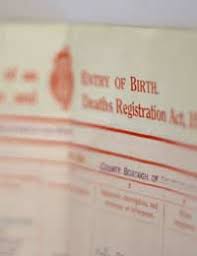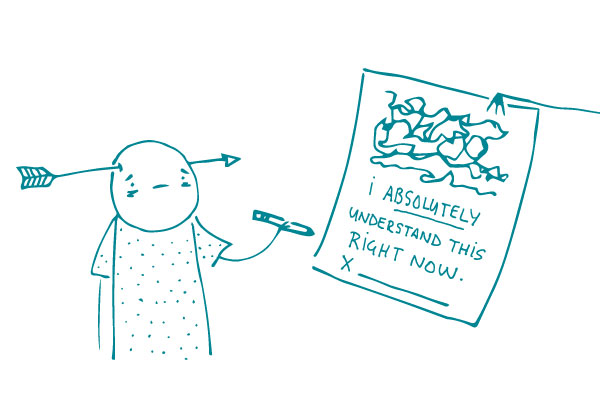This is a post by Sarah Phillimore
And what are the dangers for children of ignoring this?
TLDR:
However intelligent or articulate a child is, they do not necessarily have the same ability as adults to make decisions, particularly those with long term consequences. The capacity of any child under 16 to make decisions about medical or surgical treatment has to be carefully analysed.
Any guidance for adults working with children which ignores or downplays the importance of both Gillick competence and parental responsibility is probably unlawful and probably harmful to children and should be challenged, for all the reasons that I set out below.
Safeguarding Children.
Where adults and children interact, ‘safeguarding’ must be a key consideration. Sadly, some adults are dangerous to children and some children may wish to take risks which will hurt them. As a general point, safeguarding of children demands robust risk analysis. Failures in child safeguarding usually involve an inadequate risk assessment which has failed to either understand or share relevant information. Risks approached on the basis of untested assumptions are unlikely to be properly assessed.
The welfare of children is generally held to be the paramount concern for anyone making decisions about or on behalf of a child. However, ‘paramount’ does not mean ‘exclusive’ – the legal rights of others may need to be considered alongside the child’s welfare.
Any guidance which asserts that it promotes safeguarding of children in the context of choices children aspire to make, ought to be clear about two very important issues:
a. ‘Gillick competence’
b. Parental responsiblility.
If the guidance isn’t clear, that is a red flag that the author of any such guidance either doesn’t care about or doesn’t understand the need to protect children.
Gillick competence
Gillick competence refers to the recognition that the capacity of a child to make serious decisions about his or her life will increase as does the age and understanding of that child. It is a very important concept in the area of consent to surgical treatment – if a doctor doesn’t have a valid consent from either a parent or the child, or a court order, the doctor could be guilty of a criminal offence if he or she goes on to operate on a child.
Although a ‘child’ is defined as a person between the ages of 0-18, Gillick competence is only relevant to children under 16. Once children reach 16 they are held by various statutes as able to make their own decisions across a range of issues.
These are set out in the judgment of Lady Hale at para 26 of D (A Child) (Rev2) [2019] UKSC 42 (26 September 2019). For example Section 8(1) of the Family Law Reform Act 1969 provides that the consent of a child of 16 to any surgical, medical or dental treatment “shall be as effective as it would be if he were of full age”
‘Gillick competence’ derives from the decision of the House of Lords in Gillick v West Norfolk and Wisbech Area Health Authority [1986] AC 112 where a mother attempted to argue that children under 16 should not be provided any treatment or advice around sexual issues. The court disagreed and said that younger children could access such services, as long as they were able to understand the implications – i.e. were they ‘Gillick competent’?
The case also gave rise to the ‘Fraser guidelines’ which refer specifically to consent to contraceptive treatment and advice – some argue that it’s important to keep the two separate (see this post from the Quality Care Commission) but I suggest that there doesn’t seem much merit now in keeping advice and treatment around sexual matters separate from a child’s ability to consent to other forms of treatment.
See also Axon, R (on the application of) v Secretary of State for Health & Anor [2006] EWHC 37 (Admin) where the applicant sought to challenge the lawfulness of guidance which allowed doctors not to inform parents that children under 16 were seeking advice or treatment about sexual matters.
The Judge affirmed and was bound by the (then) House of Lords in Gillick and concluded that doctors did not have to tell parents provided they were satisfied that the child understood ALL aspects of the advice, could not be persuaded to tell his or her parents and would be at risk of harm if the treatment wasn’t provided (see para 154) .
What information should be given a child by a health professional?
The case of Montgomery (Appellant) v Lanarkshire Health Board (Respondent) (Scotland) [2015] UKSC 11 deals with what risks about birth should have been shared with an adult patient – but is a useful discussion of the general parameters of what can be meant by ‘informed consent’ – patients do not have the medical knowledge of doctors, may not know what questions to ask. Doctors have a duty to reveal and discuss ‘material’ risks with a patient.
At para 77 the court comments approvingly on 2013 guidance to doctors:
Work in partnership with patients. Listen to, and respond to, their concerns and preferences. Give patients the information they want or need in a way they can understand. Respect patients’ right to reach decisions with you about their treatment and care.”
Doctors need to take even more care with children under 16 as it cannot simply be assumed they have capacity to make decisions; this must be examined in light of their age and understanding.
The two often go hand in hand with neuro typical children. Some teenagers may lack capacity entirely or in most areas following brain injury or learning disability, as set out in the Mental Capacity Act, Decisions then would need to be made by adults for them, regardless of their chronological age.
Most – but not all – 14 year old children would be ‘Gillick competent’ to make decisions across a wide range of issues because their understanding will increase along side their chronological age. Most – but not all – 7 year old children would not be able to give informed consent to anything much beyond what they would like to eat or what clothes they would like to wear.
Determining ‘Gillick competence’ is therefore fact specific and depends on the circumstances of each individual child.
The implications of Gillick competence are provoking debate prior to the court hearing regarding Keira Bell’s challenge to the clinical decision making process at the Tavistock, in placing children on a pathway to medical or surgical intervention for ‘sex reassignment’.
I do not think this legal case in any way challenges the concept of Gillick competence; I think rather it protects it. Consent to medical treatment is only valid if the child has sufficient age and understanding to appreciate what they are signing up for – what are the material risks and the hoped for benefits? It will be interesting to see what the court makes of these arguments in October 2020, so watch this space.
Parental responsibility
Parental responsibility is defined at section 3(1) of the Children Act 1989 as “all the rights, duties, powers, responsibilities and authority which by law a parent of a child has in relation to the child and his property.”
The House of Lords in Gillick approved the following dictum of Lord Denning MR
… the legal right of a parent to the custody of a child … is a dwindling right which the courts will hesitate to enforce against the wishes of the child, and the more so the older he is. It starts with a right of control and ends with little more than advice.
This is a significant matter of status as between parent and child and, just as important, as between each of the parents. (see W (Children) [2012] EWCA Civ 999).
Interplay between Gillick competence and parental responsibility
These two concepts are thus intertwined. The younger the child and the less capacity he or she has to make decisions, the greater the extent of the exercise of parental responsibility. This is important for two main reasons.
- Most parents, most of the time, have their children’s best interests at heart. Parents are likely to be an important part of decisions around keeping children safe. Who else is advocating for the child?
- Families are also the ‘breeding ground of diversity’ and entitled to special protection – see Baroness Hale B (Children) [2008] UKHL 35.
Thus the importance of parental responsibility is recognised and protected by domestic and international law.
As was set out by Lady Hale in para 72 of The Christian Institute & Ors v The Lord Advocate (Scotland) [2016] UKSC 51 (28 July 2016):
Many articles in the UNCRC acknowledge that it is the right and responsibility of parents to bring up their children. Thus article 3(2) requires States Parties, in their actions to protect a child’s wellbeing, to take into account the rights and duties of his or her parents or other individuals legally responsible for him or her; article 5 requires States Parties to respect the responsibilities, rights and duties of parents or, where applicable, other family or community members or others legally responsible for the child to provide appropriate direction and guidance to the child in the exercise of his or her rights under the Convention; article 14(2) makes similar provision in relation to the child’s right to freedom of thought, conscience and religion; article 27(2) emphasises that the parents have the primary responsibility to secure, within their abilities and financial capabilities, the conditions of living necessary for the child’s development;
And at para 73:
Individual differences are the product of the interplay between the individual person and his upbringing and environment. Different upbringings produce different people. The first thing that a totalitarian regime tries to do is to get at the children, to distance them from the subversive, varied influences of their families, and indoctrinate them in their rulers’ view of the world. Within limits, families must be left to bring up their children in their own way.
I would therefore expect to see any guidance directed at the safety and welfare of children to give due consideration to both these issues. A failure to do so, risks diluting the effectiveness of advice around safeguarding, and being an unlawful infringement of parental responsibility.
The younger the child in question, the more serious both these failings.
Safeguarding concerns around transitioning children need careful assessment. These could involve:
- parental pressure to transition due to homophobia or wish for attention
- lack of parental support or understanding for a child who wishes to transition
- failing to consider risk to other children of ‘gender neutral’ spaces, either within a school or on residential trips
- failing to involve parents in discussions about the safety of children
- a younger child who wishes to take puberty blockers
It is neither ‘kind’ nor ‘inclusive’ to pretend that risks don’t exist and to fail to have a clear eyed and open minded approach to how to deal with them. On the contrary, it is both dangerous and stupid – and, I assert, unlawful.
Children aged 4 are very different to children aged 14. Children are not kept safe by a refusal to discuss – or even admit – this quite basic fact. Any guidance or advice that does not deal clearly with the interplay between Gillick competence and parental responsibility should be approached with caution.
Be wary: guidance and commentary which fails
Trans Inclusion Tool Kit for Schools and Educational Settings 2019 – makes only superficial reference to Gillick competence and only one glancing reference to parental responsibility at page 15. Is explicitly aimed at primary school children.
No one, no issues is off the table when it comes to safeguarding – ‘advice’ from a social worker published in the BASW journal that issues around transition are ‘not’ safeguarding issue. No mention of either Gillick competence or parental responsibility.
Only adults? Good practices in legal gender recognition for youth – explicitly urges for removal of any minimum age requirement for access to services around transition.
When should a trans child’s identity be permitted to be a material issue in a family case? – blog by the legal adviser to the charity Mermaids. The answer is – rarely. If a child of any age says they are trans, they are trans.
Please do let me know of any other examples you can find.
And support the Safe Schools Alliance in their legal action against the Trans Inclusion Took Kit.
Further reading
Transgender children: limits on consent to permanent interventions Heather Brunskell-Evans January 2020
Religious practice, blood transfusion, and major medical procedures – Journal of Paediatric Anasthesia 2009







